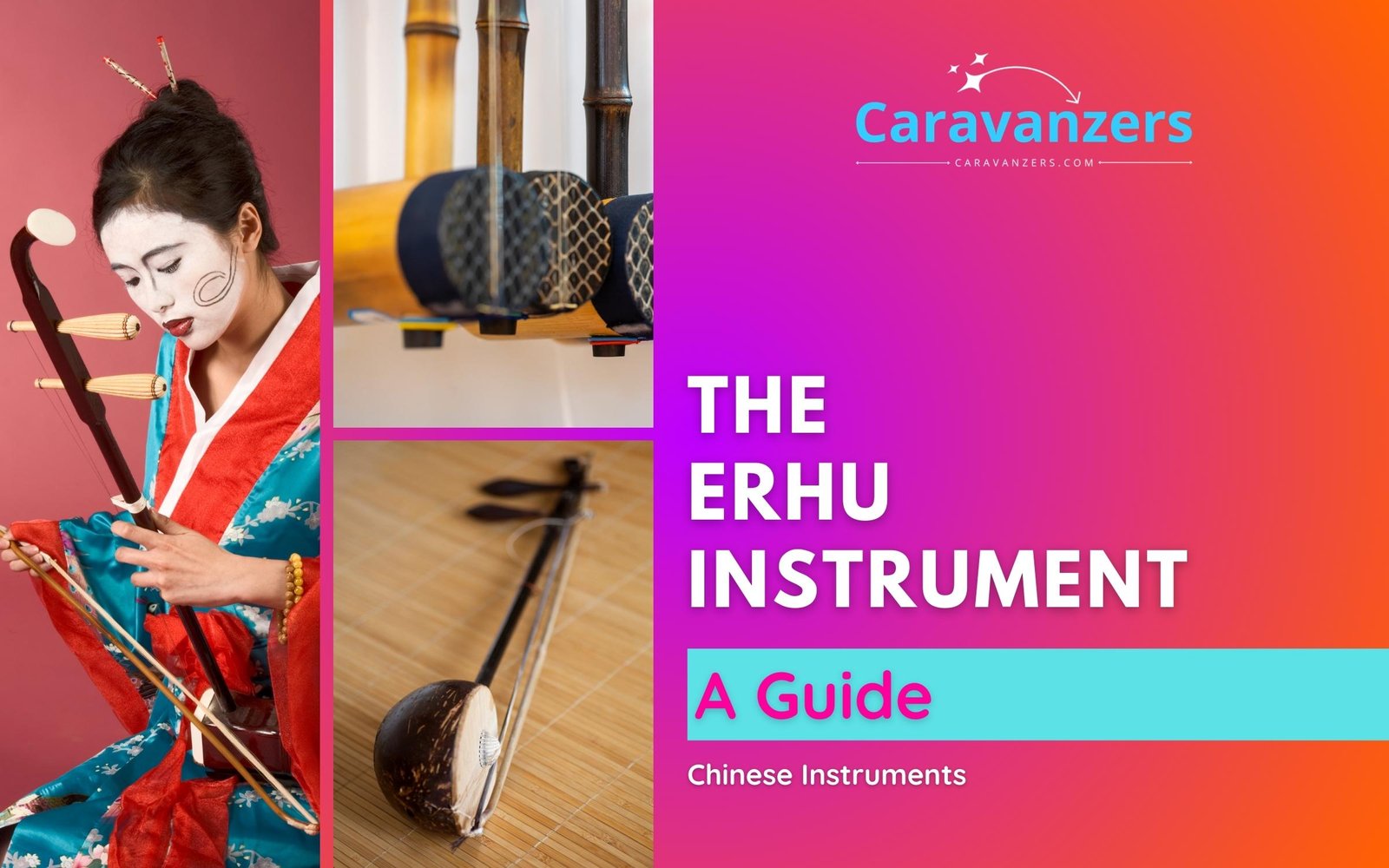
The erhu instrument is such a charming item to have in your musical home, and this guide will give you some information and tips.
I will start with an overall introduction to this popular instrument and will then share other related topics like how to play it and music sheets.
Even if you aren’t into it as a player, the erhu can give you a glimpse into Chinese culture during your travels.
So, let’s get to know the erhu!
Introduction to Erhu
The erhu (二胡) is a musical instrument from China that falls under the category of two-stringed bowed instruments and is recognized as a spike fiddle.
It is often referred to as the Chinese violin or Chinese two-stringed fiddle in the Western world.
The name “erhu” signifies its two strings and its relation to the huqin family of instruments, which includes a variety of traditional bowed string instruments used by different ethnic groups in China.
The erhu enjoys widespread use in Chinese culture due to its versatility in a variety of settings. It is capable of being performed as a solo instrument, as well as being incorporated into small ensembles or larger orchestras.
The instrument’s appeal stems from its adaptability to both traditional and modern music arrangements, including genres such as pop, rock, and jazz.
This versatility has also made it popular with younger musicians.
How To Play Erhu

The erhu is an instrument that possesses a distinct sound. I would say that it certainly isn’t the easiest Chinese instrument to play, and people really respect erhu musicians.
So, to play it, one must comprehend its fundamental structure and how to handle the bow appropriately.
In contrast to other stringed instruments, the erhu does not come with a fingerboard, so the player needs to place their fingertips directly on the strings to stop them.
The erhu has two strings that are positioned closely together, and the player’s left hand essentially plays on a single string.
The inner string is typically tuned to what musicians call the D4, and the outer string is usually tuned to A4.
Meanwhile, the instrument’s range spans over two and a half octaves, which makes it a versatile instrument that can adapt to various musical styles.
When playing the erhu, the player uses a bow created from horsehair to stroke the strings, which causes the python skin covering the resonator body to vibrate and create sound.
To maximize the instrument’s potential, the player must possess a good sense of timing and rhythm.
If you want to give it a try, check out the Anime Adventure (動漫探險記) YouTube channel for a short tutorial.
Erhu Sheet Music
Erhu music sheets are written notations that represent the melodies and musical compositions specifically designed for the erhu.
In erhu music sheets, the pitches are represented by placing numbers on a vertical grid, typically ranging from 1 to 7. Each number corresponds to a specific finger position on the strings of the erhu.
The duration of each note is indicated by different note shapes, such as whole notes, half notes, quarter notes, eighth notes, and so on.
Anyway, various symbols and markings may be used to convey specific techniques, dynamics, articulations, and ornamentations, allowing the player to interpret and perform the music accurately.
Erhu music sheets can range from simple melodies (like the “Happy Birthday” song) to complex compositions (like “Autumn Moon Over the Han Palace”). Naturally, the choice of the music depends on the skill level and musical style.
For erhu players, reading and interpreting music sheets is an essential skill to learn and develop. This is something usually learned within a family, and it enables the musician to develop a lot of skills.
For example, you can learn new pieces, practice independently, and perform with other musicians or ensembles.
While some erhu players may rely solely on their ear or improvisation skills, especially those from a village or small town area, having a solid foundation in reading music sheets can greatly enhance repertoire and musical abilities.
If you want to try some, check out the erhu sheets supplied by the Eason Music School in Singapore.
Popular Erhu Songs
Over the centuries, many popular tunes have been played on the erhu. Every Chinese person has his or her favorite songs in erhu.
My favorite is this beautiful rendition of “Autumn Moon Over the Han Palace” (汉宫秋月) by the great erhu player, An Ru Li (安如砺 ).
Yu Hongmei (于红梅) has done a fantastic job playing the “Ballad of Orchid Flowers” (蘭花花敘事曲) on the erhu. She’s considered one of the best players of this instrument.
To see a cute rendition of “Bazaar” (市集) played by two young musicians featuring the erhu with the pipa, watch this video.
Final Thoughts
I hope you enjoyed getting to know this versatile and interesting musical instrument.
You don’t have to be Chinese to admire or even want to play the erhu!
I tried my best to give you an overall picture of what this wonderful Chinese instrument means to us.
Whether you want to listen to great traditional songs played on it or want to play it yourself by digging into fantastic music sheets, you have a lot of options!
Hope you like it.
Li Xiu Ying is a travel writer and is the author of Beijing Travel. She writes about China for Caravanzers.
Follow us on Pinterest.

One Comment
Comments are closed.